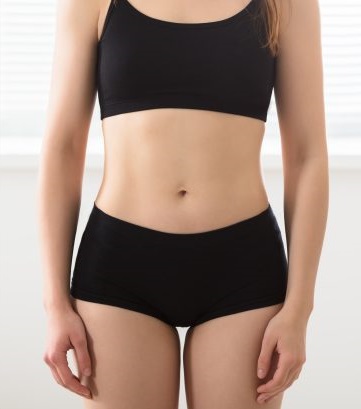
Non Surgical Fat reduction
Nonsurgical and minimally invasive options for fat reduction include technology that uses heat or cooling or an injected medication to reduce fat cells. While none of these treatments are a replacement for liposuction, they provide options for patients unwilling or unable to undergo surgery. Nonsurgical fat reduction options use a variety of modalities, including ultrasound, radio frequency, infrared light, vacuum massage and injectable medication.
Among the procedures that comprise nonsurgical fat reduction are cryolipolysis (e.g., CoolSculpting), injection lipolysis (e.g., Kybella), radiofrequency lipolysis (e.g., Vanquish) and laser lipolysis (e.g., SculpSure).
Patients who are pregnant or breastfeeding should not have any of the aforementioned procedures.
What is cryolipolysis?
Cryolipolysis, commonly referred to as "CoolSculpting" by patients, uses cold temperature to break down fat cells. The fat cells are particularly susceptible to the effects of cold, unlike other types of cells. While the fat cells freeze, the skin and other structures are spared from injury.
This is one of the most popular nonsurgical fat reduction treatments, with over 450,000 procedures performed worldwide.
Reasons patients want cryoliplysis
Patients who wish to reduce a localized fat bulge that has persisted despite diet and exercise may be interested in cryolipolysis.
Who is not a candidate for cryolipolysis?
Patients with cold-related conditions, like cryoglobulinemia, cold urticaris and paroxysmal cold hemoglobulinuria should not have cryolipolysis. Patients with loose skin or poor tone may not be suitable candidates for the procedure.
What does cryolipolysis do?
The goal of cryolipolysis is to reduce the volume of fat in a fatty bulge. Some patients may opt to have more than one area treated or to retreat an area more than once.
Does cryolipolysis require anesthesia?
This procedure is done without anesthesia.
Cryolipolysis procedure
After an assessment of the dimensions and shape of the fatty bulge to be treated, an applicator of the appropriate size and curvature is chosen. The area of concern is marked to identify the site for applicator placement. A gel pad is placed to protect the skin. The applicator is applied and the bulge is vacuumed into the hollow of the applicator. The temperature inside the applicator drops, and as it does so, the area numbs. Patients sometimes experience discomfort from the vacuum's pull on their tissue, but this resolves within minutes, once the area is numb.
Patients typically watch TV, use their smart phone or read during the procedure. After the hour-long treatment, the vacuum turns off, the applicator is removed and the area is massaged, which may improve the final results.
What are the risks of cryolipolysis?
The complication rate is low and the satisfaction rate is high. There is a risk of surface irregularities and asymmetry. Patients may not get the result they'd hoped for. Rarely, in less than 1 percent, patients may have paradoxical fat hyperplasia, which is an unexpected increase in the number of fat cells. This is three times more likely in men than in women and is seen more in those of Hispanic or Latino descent.
Recovering from cryolipolysis
There are no activity restrictions. Patients sometimes feel sore, as if they had worked out. Rarely do patients experience pain. If that happens the patient should contact the plastic surgeon, who may prescribe medication for a few days.
What are the results of cryolipolysis?
The injured fat cells are gradually eliminated by the body over four to six months. During that time the fatty bulge decreases in size, with an average fat reduction of about 20 percent.
What is injection lipolysis?
Injection lipolysis chemically reduces the number of fat cells around the injection site. The chemical, called deoxycholic acid, results in fat cell disruption and death. Currently, it is FDA-approved for treatment of the area underneath the chin to eliminate what is known as a "double chin." A commonly known type of injection lipolysis is Kybella®.
What is radiofrequency lipolysis?
Radiofrequency lipolysis is a procedure which uses a radio frequency to heat the fat without an instrument making physical contact with the patient. The applicator heats from a distance of one centimeter from the skin. Fat cells are preferentially heated without impacting other types of cells in the skin or other structures. A common type of radiofrequency lipolysis is Vanquish.
What is laser lipolysis?
Laser lipolysis uses laser energy delivered through an applicator. The fat cells are preferentially heated and disrupted without impacting other types of cells in the skin or other structures. A common type of laser lipolysis is SculpSure.
How much does nonsurgical fat reduction cost?
The average cost of nonsurgical fat reduction in USA is $1,226, according to the latest statistics from the American Society of Plastic Surgeons. But the prices in Iran and Turkey are much lower than America and Europe and even lower than India. To see the price, visit the Treatment-Prices.
Related Packages

BEFORE & AFTER


